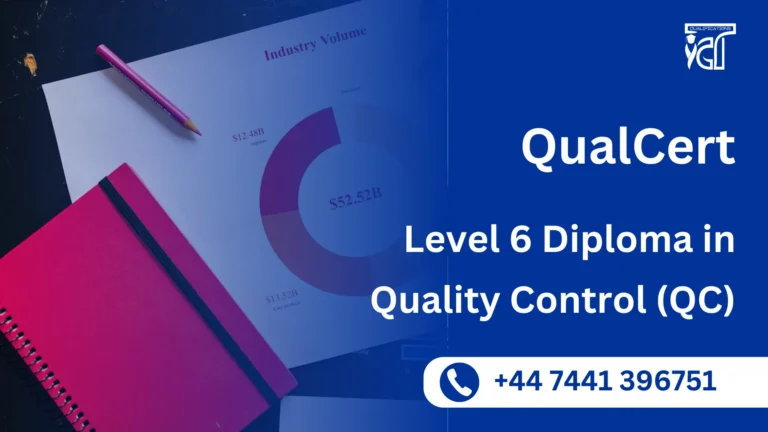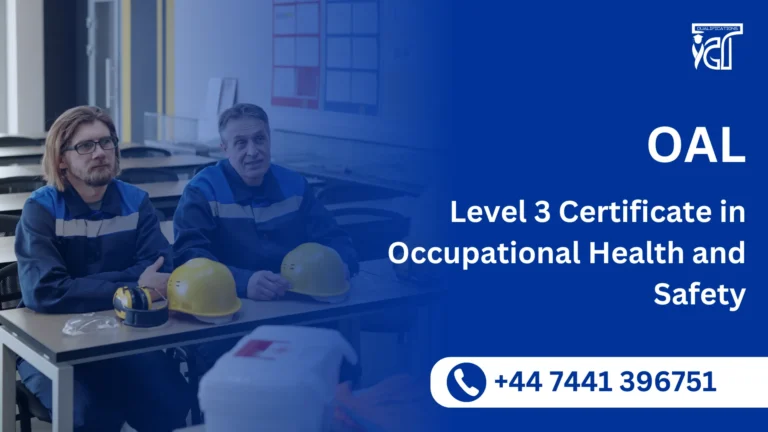In the modern era of environmentally responsible development, understanding the full environmental impact of a building throughout its life span is crucial. The QualCert Level 3 Certificate in Green Building Life Cycle Assessment offers a robust foundation in life cycle thinking and equips learners with the skills needed to evaluate the sustainability performance of buildings—from design and construction to operation and end-of-life.
This qualification is ideal for professionals in architecture, construction, engineering, and sustainability who want to integrate life cycle assessment (LCA) into their workflow to support climate-conscious decision-making. The course is globally recognized, fully assignment-based, and aligned with international green building standards.
The QualCert Level 3 Certificate in Green Building Life Cycle Assessment focuses on the tools, methodologies, and analytical frameworks used to assess the environmental performance of buildings across their full life cycle. It introduces learners to LCA techniques that measure energy use, carbon emissions, material impacts, and waste generation—supporting better environmental outcomes in construction and design.
The QualCert Level 3 Certificate in Green Building Life Cycle Assessment offers a future-focused pathway for those committed to building responsibly. By equipping learners with the skills to analyze the long-term environmental impacts of construction, this course fosters smarter, greener decision-making in every phase of the building process.
Whether you’re a professional seeking to align your work with environmental goals or a learner stepping into the world of sustainable design, this course will empower you to make a measurable difference.
Enrol now and take a leading role in the transformation toward low-impact, high-efficiency construction.
QualCert Level 3 Certificate in Green Building Life Cycle Assessment
The QualCert Level 3 Certificate in Green Building Life cycle assessment offers 20 Credits, requiring a Total Qualification Time (TQT) of 100 hours, including 70 Guided Learning Hours (GLH). This course focuses on evaluating environmental impacts at every stage of a building’s life cycle.
| Unit Ref# | Unit Title | Credit | GLH | TQT |
| QC18001-1 | Introduction to Life Cycle Assessment (LCA) | 4 | 14 | 20 |
| QC18001-2 | Environmental Impact Analysis | 4 | 14 | 20 |
| QC18001-3 | Energy and Carbon Footprint Evaluation | 4 | 14 | 20 |
| QC18001-4 | Sustainable Design and Material Selection | 4 | 14 | 20 |
| QC18001-5 | Case Studies and LCA Software Applications | 4 | 14 | 20 |
GLH (Guided Learning Hours) and TQT (Total Qualification Time) are terms commonly used in vocational qualifications to help define the amount of time a learner is expected to spend on their studies.
1. GLH (Guided Learning Hours)
GLH refers to the number of hours a learner spends being directly taught, supervised, or supported during their course. This includes the time spent in activities such as:
- Classroom instruction
- Practical workshops
- One-on-one tutoring or mentoring sessions
- Online learning sessions with tutor support
In other words, GLH represents the time that learners are actively engaged with their instructors or learning activities.
2. TQT (Total Qualification Time)
TQT represents the total amount of time a learner is expected to invest in completing a qualification, including:
- GLH (Guided Learning Hours): Time spent on direct learning, as explained above.
- Self-Directed Learning: This includes time spent on independent study, research, assignment completion, preparation for exams, and any other work the learner does outside of direct teaching hours.
TQT is a broader measure that includes all the time required to achieve the qualification. It helps learners and employers understand the overall commitment required for the qualification.
Key Differences Between GLH and TQT:
- GLH focuses on direct learning with guidance or supervision.
- TQT includes GLH as well as independent study time and other learning-related activities.
Example:
If a qualification has a TQT of 600 hours and a GLH of 250 hours, it means the learner should spend 250 hours in direct learning (classroom, online, or tutor-led sessions) and 350 hours on independent study or research.
Learning Outcomes of QualCert Level 3 Certificate in Green Building Life cycle assessment:
1. Introduction to Life Cycle Assessment (LCA)
Upon completing this unit, learners will be able to:
- Define the principles and key concepts of Life Cycle Assessment (LCA).
- Explain the importance of LCA in sustainable construction and environmental management.
- Identify different phases of LCA (goal and scope definition, inventory analysis, impact assessment, and interpretation).
- Understand the relationship between LCA and international environmental standards such as ISO 14040 and ISO 14044.
- Evaluate the benefits and challenges of implementing LCA in the construction sector.
2. Environmental Impact Analysis
Upon completing this unit, learners will be able to:
- Analyze the environmental impact of building materials, energy use, and waste generation.
- Assess the role of embodied and operational carbon in the life cycle of a building.
- Interpret results from environmental impact assessments to support sustainable decision-making.
3. Energy and Carbon Footprint Evaluation
Upon completing this unit, learners will be able to:
- Understand the concept of energy efficiency and its role in life cycle assessment.
- Calculate the carbon footprint of building materials and operational energy consumption.
- Compare renewable and non-renewable energy sources in building projects.
- Evaluate the impact of energy consumption on greenhouse gas emissions and climate change.
4. Sustainable Design and Material Selection
Upon completing this unit, learners will be able to:
- Identify sustainable building materials and assess their life cycle impact.
- Analyze the role of circular economy principles in sustainable material selection.
- Integrate sustainable design strategies into the early stages of building development.
- Apply life cycle thinking to optimize material efficiency and resource conservation.
5. Case Studies and LCA Software Applications
Upon completing this unit, learners will be able to:
- Examine real-world case studies showcasing successful LCA implementation in construction.
- Interpret and analyze LCA results to inform sustainable building decisions.
- Develop an LCA-based sustainability report for a construction project.
Key Benefits of the QualCert Level 3 Certificate in Green Building Life Cycle Assessment
- Globally Recognized Qualification
Earn a respected certification that is accepted by employers and institutions in the green construction and sustainability sectors worldwide. - Ofqual-Regulated
This qualification is officially regulated, ensuring it meets the highest UK education and training standards, adding credibility to your professional profile. - 100% Assignment-Based Assessment
No exams—complete the course through practical, real-world assignments that assess your understanding and application of life cycle analysis. - Flexible Online Learning
Study from anywhere, at your own pace, with full support—ideal for working professionals and international learners. - Industry-Relevant Skills
Gain practical knowledge of Life Cycle Assessment (LCA) methodologies used in sustainable architecture, engineering, and construction. - Aligns with ESG and Net-Zero Goals
Learn how to support environmental, social, and governance (ESG) strategies and carbon reduction targets through evidence-based sustainability reporting. - Boosts Career Opportunities
Enhance your employability in roles such as sustainability consultant, environmental assessor, green building specialist, or LCA technician. - Supports Green Building Certifications
Understand how to apply LCA data in support of LEED, BREEAM, and other international green building certification frameworks. - Ideal for Professionals and Beginners
Whether you’re new to sustainability or an experienced practitioner, the course provides a comprehensive yet accessible foundation in life cycle thinking. - Pathway to Advanced Qualifications
Offers a stepping stone to higher-level diplomas or degrees in environmental management, sustainable construction, or green engineering.
The QualCert Level 3 Certificate in Green Building Life Cycle Assessment is designed for professionals and individuals seeking to enhance their expertise in sustainable building practices and environmental impact assessment. This course is suitable for:
- Architects and Designers: Professionals looking to integrate sustainable design principles and LCA methodologies into building projects.
- Engineers and Construction Managers: Individuals involved in project planning, execution, and sustainability compliance in the construction sector.
- Environmental Consultants and Sustainability Specialists: Experts focusing on carbon footprint analysis, green building certification, and regulatory compliance.
- Facility and Asset Managers: Professionals responsible for optimizing the environmental performance of existing buildings and infrastructure.
- Government and Regulatory Officials: Policymakers and compliance officers involved in environmental regulations and sustainable development initiatives.
- Students and Graduates in Related Fields: Individuals with an academic background in construction, engineering, architecture, or environmental science who wish to specialize in life cycle assessment for green buildings.
This course provides essential knowledge and skills for professionals committed to reducing environmental impacts, achieving sustainability targets, and enhancing the efficiency of building projects through life cycle assessment methodologies.
Entry Requirements
Register Now
Qualification Process
Qualification Process for the QualCert Level 3 Certificate in Green Building Life Cycle Assessment
- Self-Assessment:
Begin by evaluating your eligibility to ensure you meet the qualification requirements, including work experience, knowledge, and language proficiency. - Registration:
Complete your registration by submitting the required documents, including a scanned copy of a valid ID, and paying the registration fee. - Induction:
An assessor will conduct an induction to confirm your eligibility for the course and explain the evidence requirements. If you do not meet the criteria, your registration will be canceled, and the fee will be refunded. - Assignmnets & Evidence Submission:
Provide all assignmnets and the necessary evidence based on the assessment criteria outlined in the course. If you are unsure of the required evidence, consult with the assessor for guidance on the type and nature of evidence needed. - Feedback and Revision:
The assessor will review your submitted evidence and provide feedback. Evidence that meets the criteria will be marked as “Criteria Met,” while any gaps will be identified. You will be asked to revise and resubmit if needed. - Competence Evidence:
Submit final evidence demonstrating that all learning outcomes have been met. This evidence will be marked as “Criteria Met” by the assessor once it is satisfactory. - Internal Quality Assurance (IQA):
The Internal Quality Assurance Verifier (IQA) will review your evidence to ensure consistency, quality, and compliance with standards. - External Verification:
The IQA will submit your portfolio to QualCert External Quality Assurance Verifiers (EQA) for final confirmation. The EQA may contact you directly to verify the authenticity of your evidence. - Certification:
Upon successful completion of all checks, QualCert will issue your official certificate, confirming that you have attained the QualCert Level 3 Certificate in Green Building Life Cycle Assessment.







